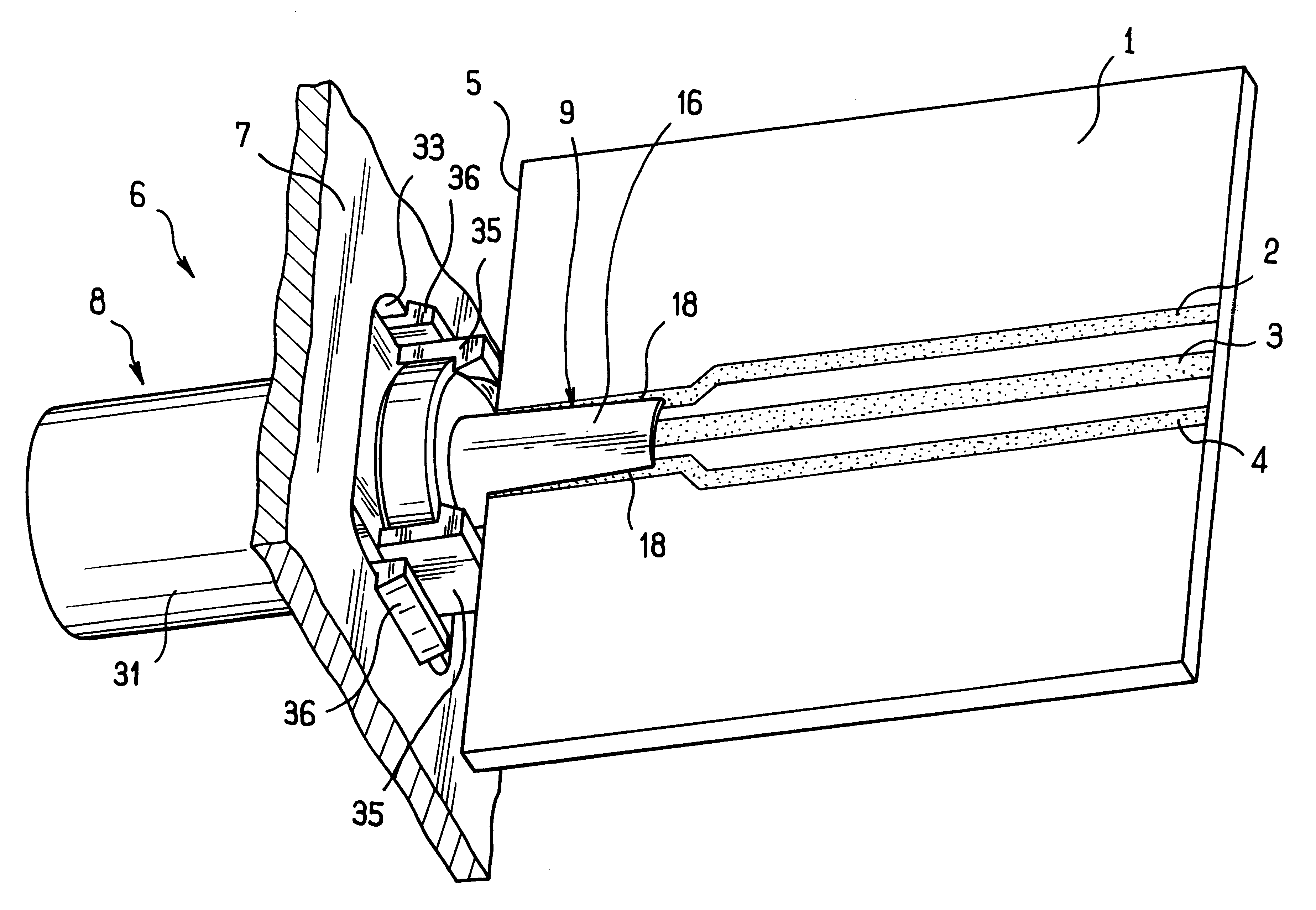Device for electrically connecting a coaxial line to a printed circuit card
a technology of printed circuit card and coaxial line, which is applied in the direction of coupling device connection, coupling device details, two-pole connection, etc., can solve the problems of high manufacturing cost, complex and expensive, and inability to enable the cable to be disconnected, and achieves low cost and small volume
- Summary
- Abstract
- Description
- Claims
- Application Information
AI Technical Summary
Benefits of technology
Problems solved by technology
Method used
Image
Examples
Embodiment Construction
In FIGS. 1 to 8, there can be seen a printed circuit card 1 having a ribbon of three parallel conductor tracks 2, 3, 4, where the center track 3 is designed to convey an electrical signal while the tracks 2 and 4 on either side thereof are ground tracks.
The spacing between the tracks on the card is determined as a function of the impedance that is to be given to the pseudo-coaxial line they constitute.
The three tracks extend to the edge 5 of the card where they are brought closer together so that their spacing corresponds to the spacing of the connection device 6 described below.
The connection device 6 is mounted on a panel 7 (shown in part) of a housing (not shown) containing the card.
The device comprises a body 8, an outer contact 9, an insulator 10, and a center contact 11 housed inside the outer contact.
In FIG. 6, the outer contact can be seen to comprise a tubular rear portion 12 for connecting electrically to the ground contact of a coaxial connector element (not shown) to whi...
PUM
 Login to View More
Login to View More Abstract
Description
Claims
Application Information
 Login to View More
Login to View More - R&D
- Intellectual Property
- Life Sciences
- Materials
- Tech Scout
- Unparalleled Data Quality
- Higher Quality Content
- 60% Fewer Hallucinations
Browse by: Latest US Patents, China's latest patents, Technical Efficacy Thesaurus, Application Domain, Technology Topic, Popular Technical Reports.
© 2025 PatSnap. All rights reserved.Legal|Privacy policy|Modern Slavery Act Transparency Statement|Sitemap|About US| Contact US: help@patsnap.com



